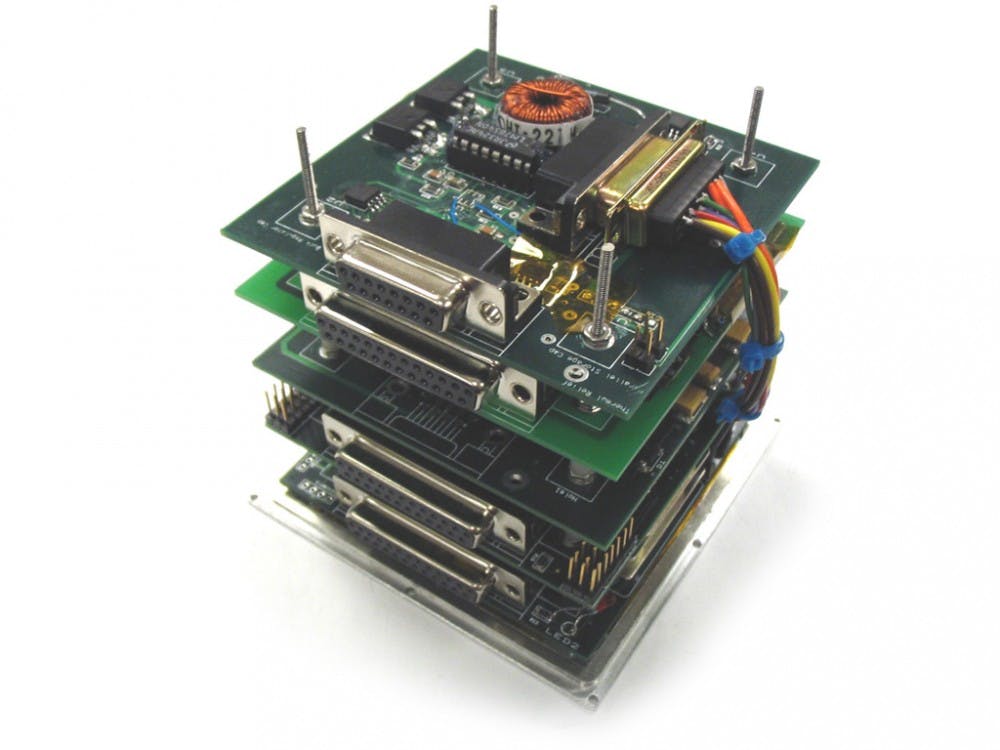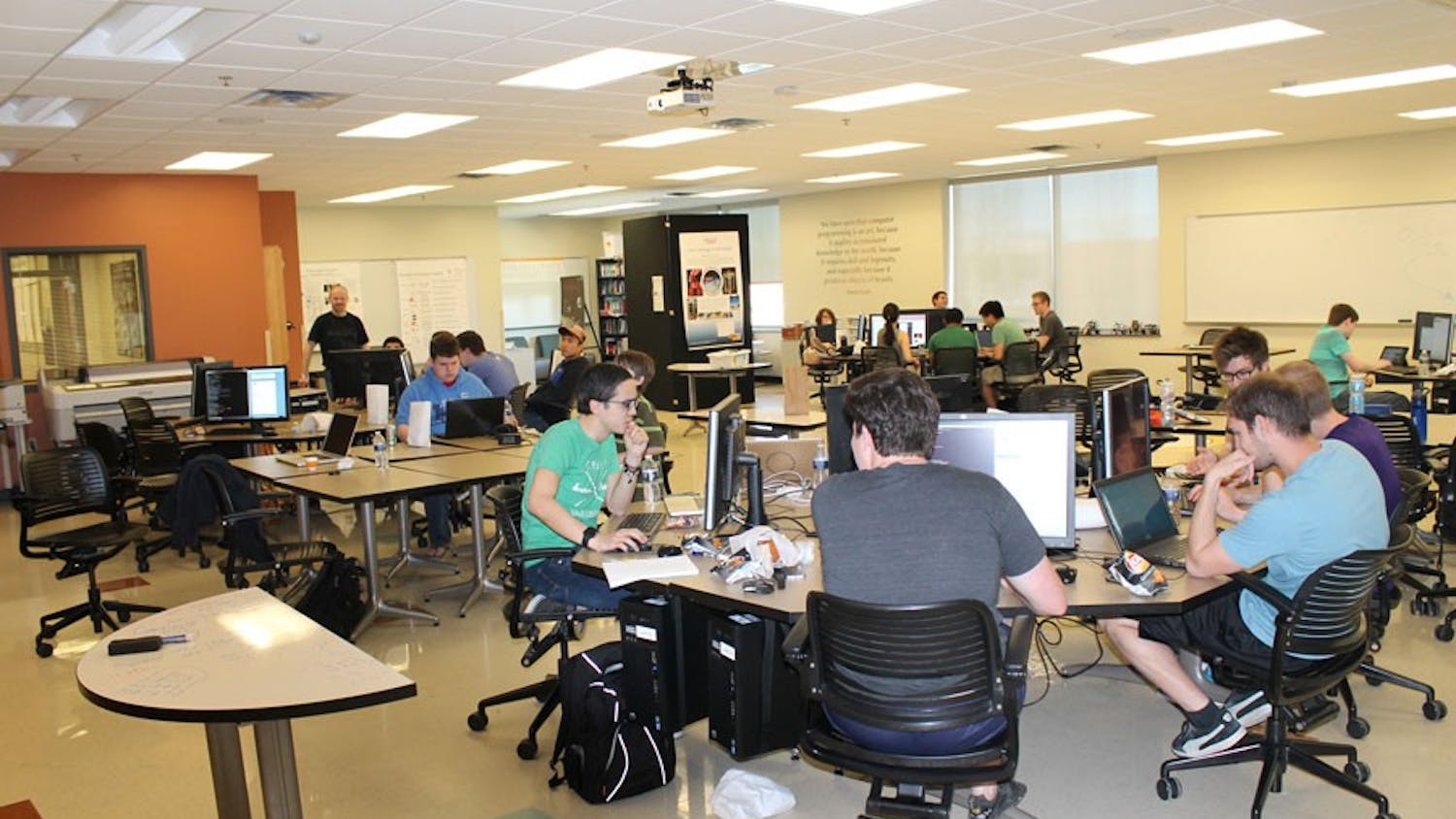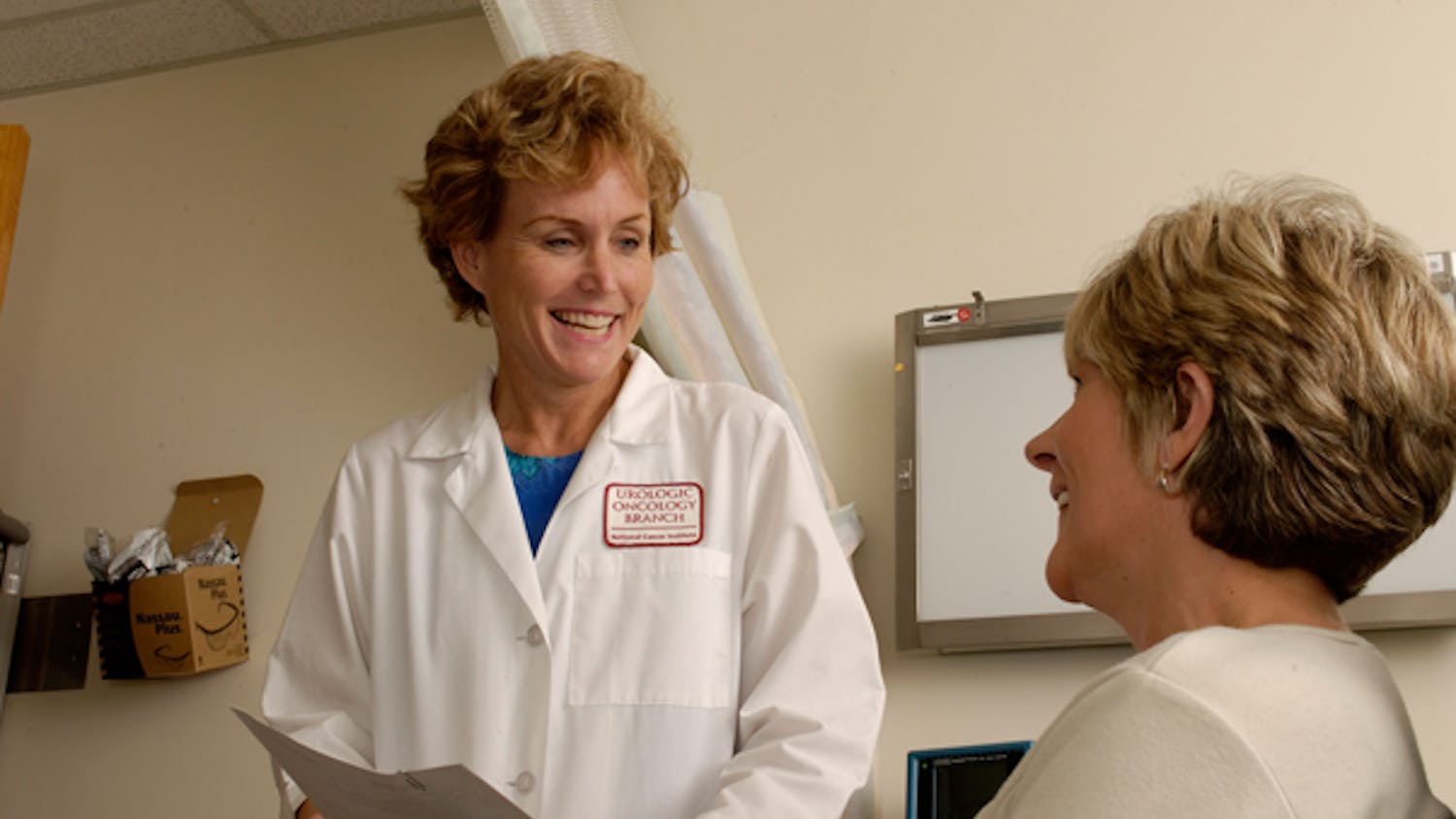By David Adams | Echo
It's just a plastic model created using Taylor's 3-D printer right now. But in less than two years, the Extremely Low Earth Orbit Satellite (ELEO-Sat) could be on its way to near-space through the eighth cycle of the Air Force University Nanosat Program (UNP).
What stands between ELEO-Sat and its adventure in the ionosphere? The satellites being built by nine other schools, including the University of California Los Angeles, the University of Florida and the Georgia Institute of Technology.
That's where you come in. Because only the best satellite will fly.

ELEO-Sat was chosen by the UNP for the latest in a series of two-year competitions that selects nanosatellites, generally no larger than microwaves, to launch into Earth orbit. Taylor was one of ten applicants chosen to compete, from an initial pool of 30 schools.
Taylor is the only Christian institution and by far the smallest chosen. The nearest competitor is the Missouri University of Science and Technology, which enrolls approximately 7,600 students.ELEO-Sat gives Taylor a platform to increase its reputation nationally, according to sophomore Kate Yoshino, who will serve as ELEO-Sat's project manager.
"You can see all those universities up there, and then there's little Taylor," Yoshino said. "We're in this big pool with all these big names, and it's a unique opportunity to not only show what Taylor's about." The program is also a chance for Taylor to share its message.
Because of the competitive nature and wider scope of the project than TSAT, the predecessor to ELEO-Sat that will be launched through NASA later this year, Yoshino is looking for students outside of the School of Natural and Applied Sciences to assist with bringing the project to fruition.
Marketing students could help generate funding for the project. Business and finance students would handle accounting. Students with Web design skills could manage ELEO-Sat's online presence. Media communication or professional writing students could publicize the project. Education majors would have the opportunity to develop curriculum to share ELEO-Sat's mission in Marion and Noblesville High Schools.
Yoshino also encourages students of all majors to consider how they could contribute to the project and propose their ideas.
Engineering capstone students will complete the construction of ELEO-Sat in capstone classes over the next two years, with completion scheduled for J-term 2015. Other students will work alongside them as ELEO-Sat comes to life.
The ELEO-Sat program will provide unique opportunities for students to expand their skills in a real-world project. "I have a feeling marketing students aren't used to marketing this sort of thing," Yoshino said.
Senior David Lew, who worked on TSAT, said his experience with the project helped him easily land a job with New Eagle, an automotive engineering firm, in January. Non-engineering majors working on ELEO-Sat will gain technical skills that could open up career possibilities for them as well.
Not to mention, Lew said, that students working on ELEO-Sat will be pioneers for Taylor's budding satellite program.
Junior Joe Emison, who will be the lead engineer for ELEO-Sat, believes the project's value extends beyond individual students gaining experience."In the long run, this will be really beneficial to every program at Taylor. In the short run, particularly the engineering program," Emison said. "But what this is going to do in the long run is it's going to bring in students who are already really good at what they do, students who might not have heard of Taylor otherwise."
If you are interested in working on the ELEO-Sat program, plan to attend an informational meeting on May 2, at 7 p.m. in Nussbaum 210, or email Yoshino at kate_yoshino@taylor.edu.





